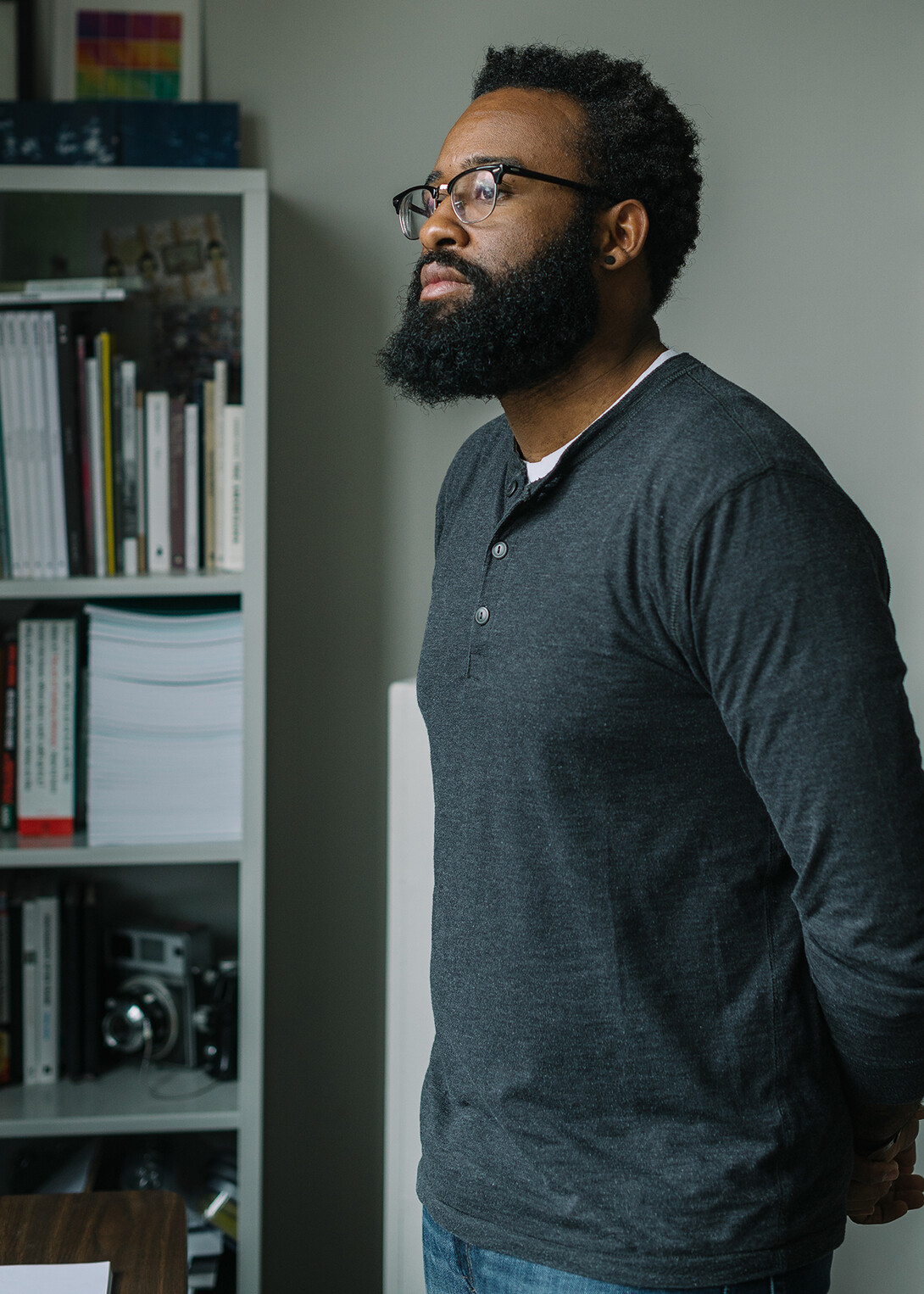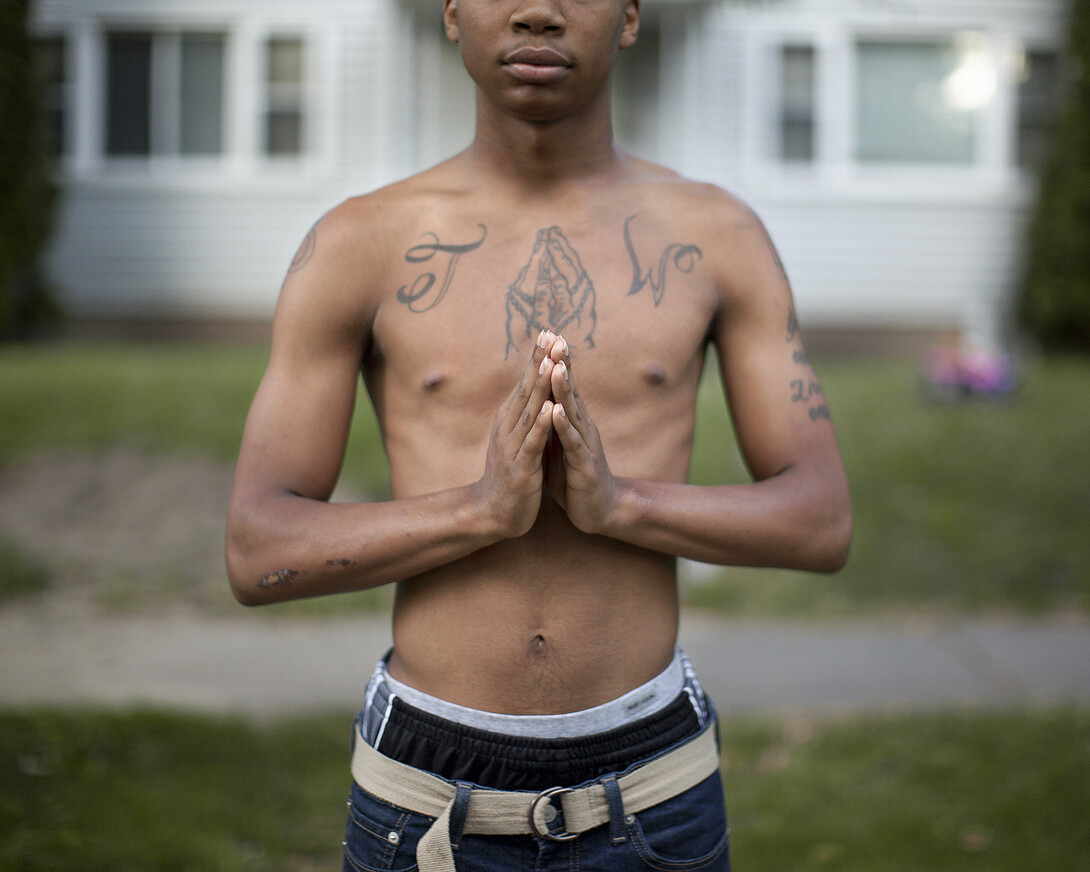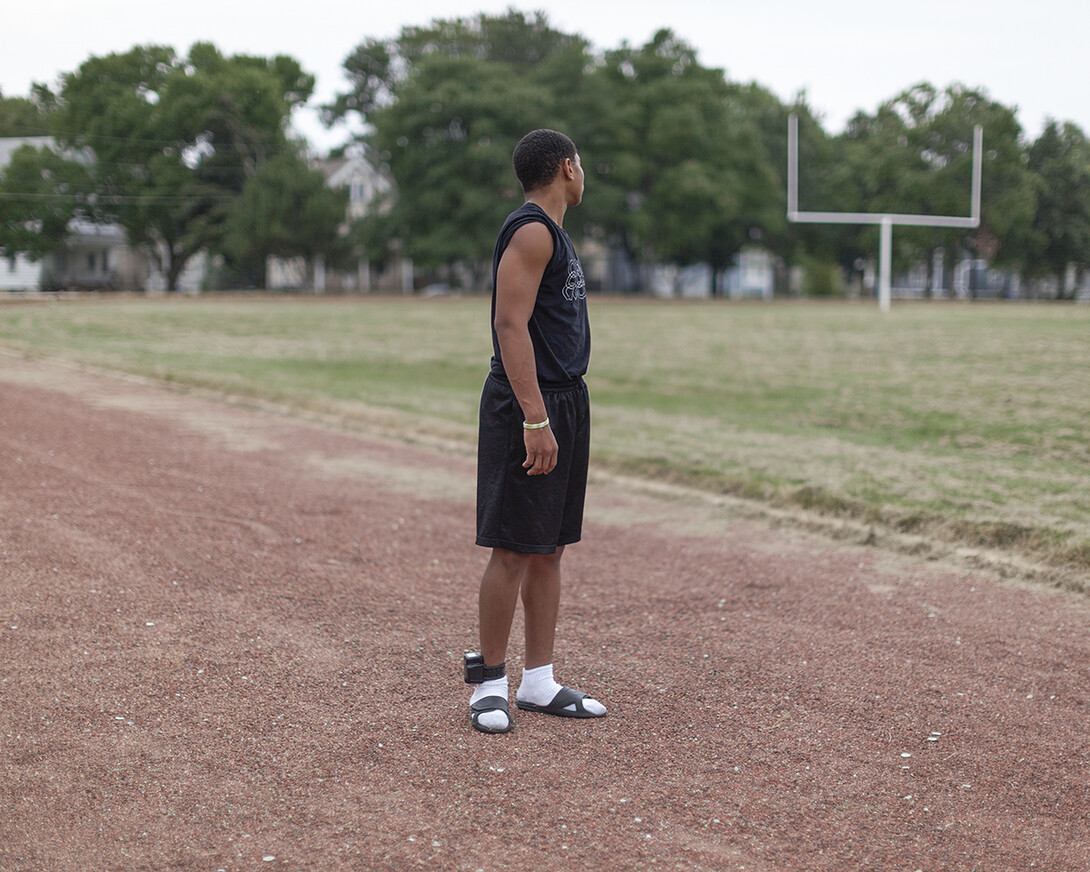
For three years, Zora Murff, a University of Nebraska–Lincoln graduate photography student originally from Des Moines, worked as a tracker for the Linn County Juvenile Detention and Diversion Services in Cedar Rapids, Iowa.

“We were an extension of probation officers,” he said. “Everything I did probation officers used to do in the past, but their case loads have grown so much that they had to start figuring out ways to contract out these services. So my job was to mainly have a consistent contact with kids on probation.”
He would meet with them anywhere from once a week to three to four times per week.
“Just to check in and make sure things were going well at home, going well at school, and that they’re following whatever their probation expectations might be,” he said.
Murff completed his undergraduate degree in psychology at Iowa State University and did field work for several years, providing services for people with disabilities and later worked with people with mental illness.
“I was not satisfied with field work, so I decided to go back to school for photography,” he said. “I was living in the Cedar Rapids area at the time, so I was working full time at the detention facility and then going to school part time for photo.”
He needed a project for his advanced photography course.
“The course objective was to create one, cohesive body of work,” he said. “Working full time, trying to do school part time, I had to consider time management. I’m working with these kids all the time. It would probably make an interesting project, so I decided to go that route.”
His supervisor was open to the idea.
“They knew I was going to school for photo,” he said. “One afternoon, I just went in and said, ‘Hey, I’m in this class, and I want to work on this project. Would it be okay if I just started taking pictures?’”
They said yes as long as he didn’t use any faces or use any actual names, for privacy reasons.
This began Murff’s series, titled “Corrections” in which he has created a series of portraits of the juveniles he tracked.
“Looking at photographers and photographs, in general, I’ve always been interested in portraits,” Murff said. “So I wanted to make portraits of people. That’s where I started the project. Then as I continued to work on it and hash out the work and ideas through critiques, I started to incorporate other aspects of youth experience in the system.”
To date, he has taken more than 200 photographs. Around 40 of them were recently published in a monograph published by Ain’t Bad Editions.
He has also shown the work at the Vermont Center for Photography; the Center for Fine Art Photography in Fort Collins, Colorado; and for an exhibition in Iowa City. His work was also used at the Nebraska State Capitol, in partnership with the ACLU of Nebraska, as legislators were voting on solitary confinement in the juvenile justice system this spring.
“Zora’s success with ‘Corrections’ is well-deserved, but he won’t rest on his laurels,” said Professor of Art Dana Fritz. “He is building on it by sharing the photographs and ideas more widely and creating opportunities for interaction with his audience. This communication fuels his new work and ideas and propels his dynamic art practice.”
Murff has been pleased with the reaction, so far, to his work.
“I get a lot of comments on how beautiful the images are,” Murff said. “And while that’s nice, I think it’s more important when people are telling me they are taking something from the series as a whole – whether that might be I didn’t know this was something happening in my community or I have friends or family in the system, and these are my thoughts about the juvenile justice system. Having those interactions where people are seeing the work and trying to relate to it on a deeper level, those are definitely the stronger interactions.”
While a couple of the youth in the series have multiple images, Murff said the goal of the series was to show the wide array of the youth he worked with as a tracker.
“It was never my focus to do an individual story. It was to get a broad view of these are the kids who move through the system,” he said. “I think, for me, the series is a way for people to engage in this issue because it’s something that happens in every community. I think it was more providing this view from a perspective of someone who had access to be inside of the system and have this kind of intimate experience with it.”
Murff hopes viewers see that the system isn’t “this black and white thing.”
“There’s this overwhelming feeling of crime and punishment, and rehabilitation comes after the fact,” he said. “The fact that we move through life in these cycles and hopefully maybe they will see themselves in the situation and think about what are the things they might be able to do to help their own community in some way. Think about how images are used to influence our perceptions of people in the system.”
Murff said his interest in photography began when he was looking for a creative outlet.
“When I was really young, I used to draw a lot. Then as I got older, it was something I let go of. I bought a small point-and-shoot camera and had a few people tell me, ‘Oh, these photos are really good, you should explore this.’ So I bought a nicer camera and wanted to learn how to use it.”
He took a community arts course at the Des Moines Art Center and learned basic camera function.
“As I was making photographs for that class, I realized this was something I was really into and something I really wanted to do, so that became my springboard for my education in photography.”
This spring, Murff was one of 165 photographers selected from around 2,500 applicants to participate in the New York Times Portfolio Review, run by the New York Times Lens Blog. There, he got portfolio reviews from photography editors, curators, gallery owners and others.
“’Corrections’ has been extremely well received, and it partly led to Zora being selected to attend the New York Times Portfolio Review this April,” said Assistant Professor of Art Walker Pickering. “Selection for this opportunity was highly competitive and has already led to Zora being hired to do editorial work.”
Two of the people he met with included David Gonzalez, a photographer for the New York Times who helps run Lens Blog, and Siobhan Bohnacker, the photo editor at The New Yorker.
“You also get these unexpected opportunities,” Murff said. “James Estrin, the senior staff photographer at the New York Times, we ran into each other at the review. He invited me to his office, so I got to go to the Times building for a little bit and hang out and talk to him. It was a really great experience.”
For now, Murff is focusing on completing his Master of Fine Arts in photography at Nebraska and trying new things in the medium of photography.
“Right now, I’m working on a project where I’m not making my own images, but I’m using appropriated images,” he said. “And manipulating materials in an attempt to explore the idea of stereotypes and police violence toward people of color in the criminal justice system.”
Murff likes photography’s ability to tell stories visually.
“There are things in an image that people can read into or pick up on,” he said. “Even though they don’t always necessarily get the message right, they’re usually in the ballpark. There’s something interesting about the image as language to me.”
His work on “Corrections” has allowed him to see the power in what he creates.
“I think it’s reinforced this idea that art can be used a tool to create dialogue,” Murff said. “Art can be this powerful motivational tool to help sway people to make decisions about things.”












